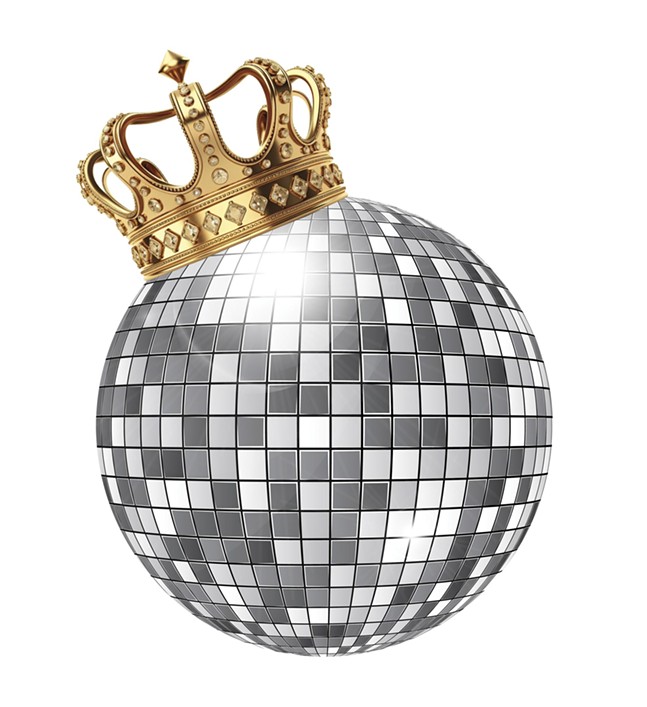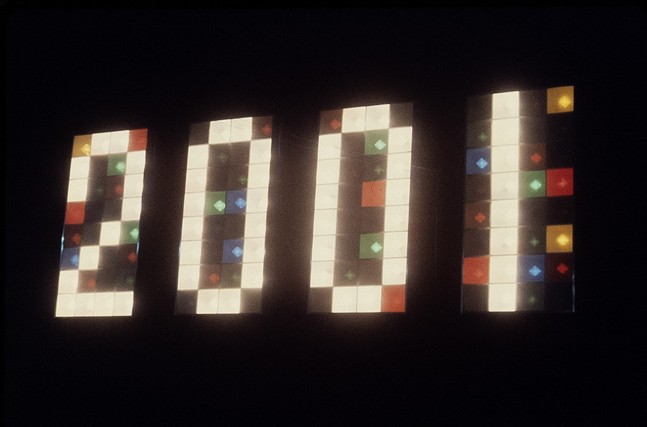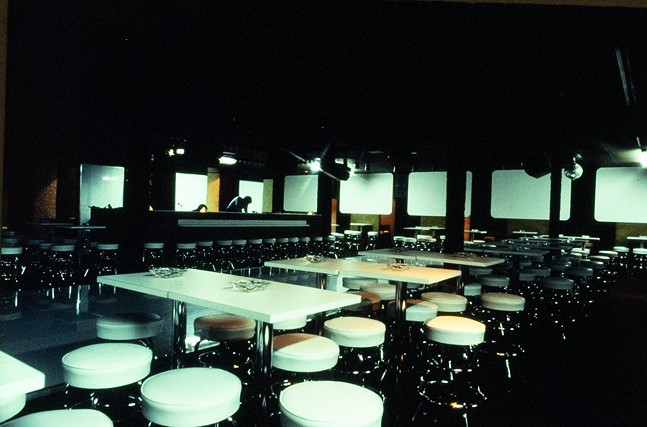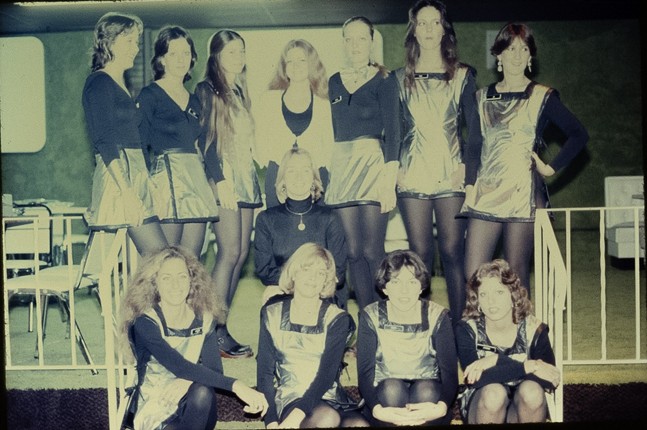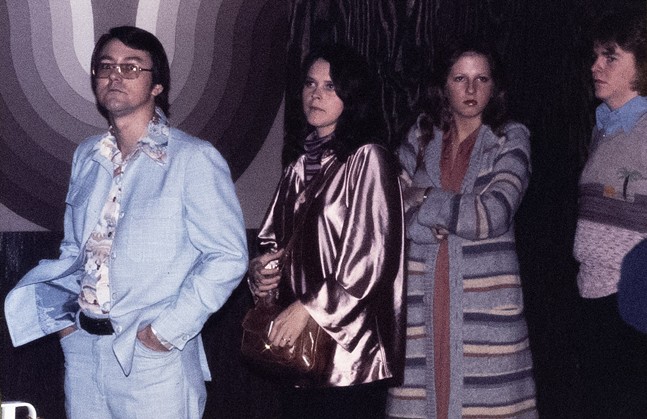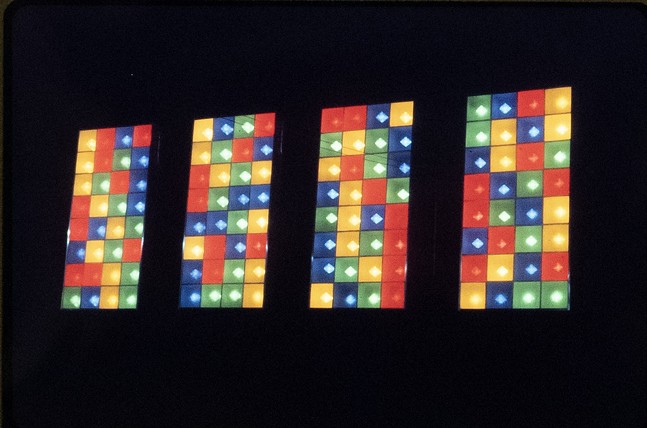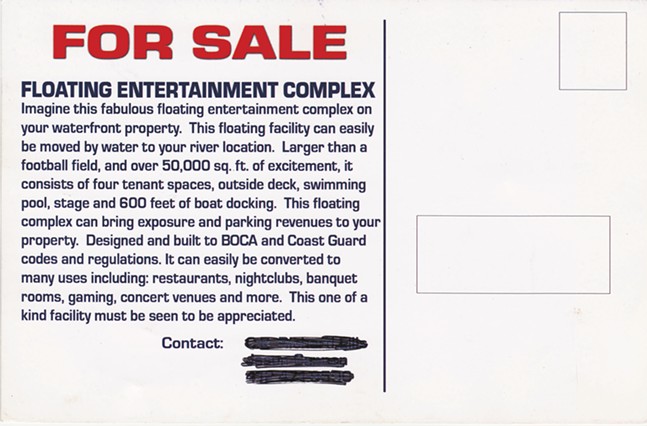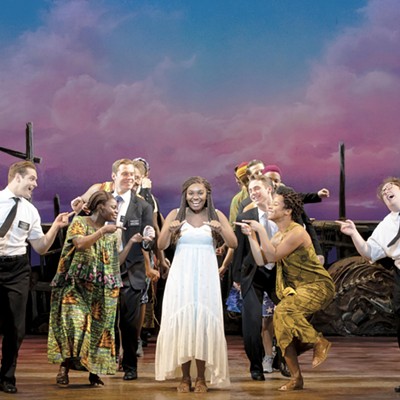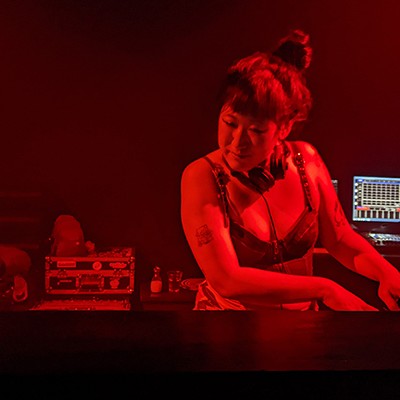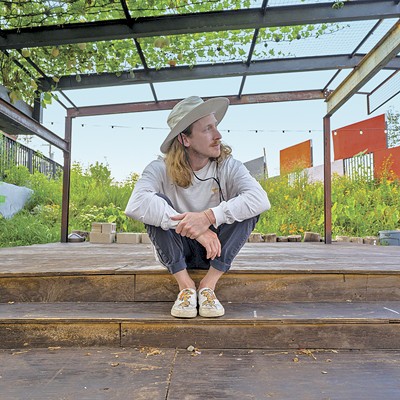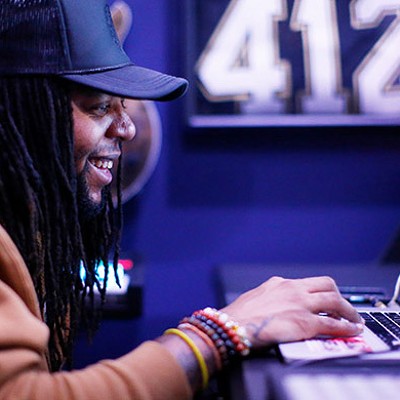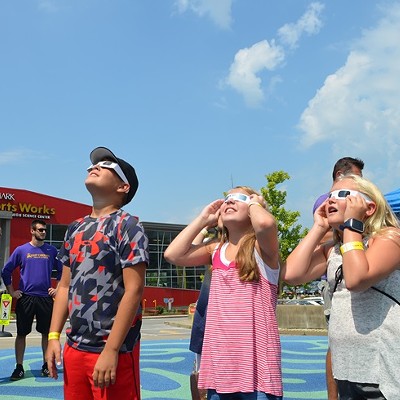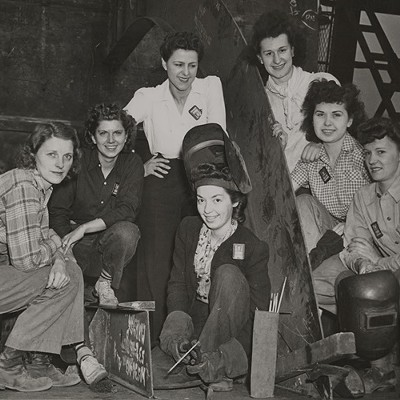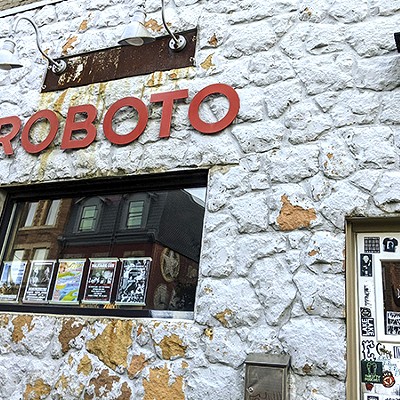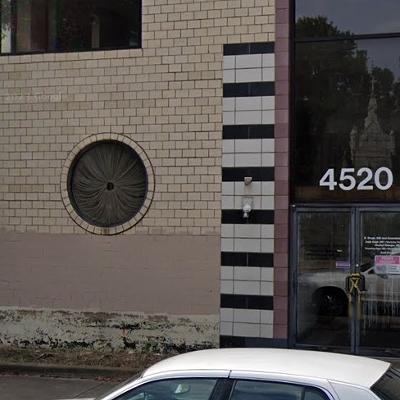“Ladies and gentlemen, this is Major Tom, your computer speaking,” Thomas Jayson recalls the nightly speech would go at famed Pittsburgh hotspot Club 2001. “In 60 seconds, the room will go into total darkness. So please remain where you are standing or seated. Enjoy the show,” Jayson repeats. “And then it would go black … you’d hear [a] 10-9-8 [countdown] and when it [hit] one, it would blast off, and we had a big, big sound system in place with vibrating strobe lights.” An eight-screen panel surrounding the dance floor played panoramic footage of the moon landing, then a slideshow of photos from the city.
That opening ceremony is a relic of the club scene’s heyday, when partygoers packed the Strip District, Station Square, the South Side, and parts of the suburbs, unfolding roughly from the late 1970s to the mid-2000s. No single factor caused its decline, but contributors were changing consumer habits, a looming recession, and a series of high-profile crimes. (Pittsburgh City Paper news editor Colin Williams recently investigated why 2020s nightlife still hasn’t bounced back.)
Yet the nostalgia for the nightlife of yesteryear remains (some Gen Z-ers even feel cheated). Interviewing some of the city’s senior swing dancers this winter, memories of Chauncy’s surfaced more than once, as did Confetti, a nightclub in the since-demolished Parkway Center Mall in Green Tree. Spend any time with Gen Xers and elder millennials and you’ll undoubtedly hear tales of wild nights at Bar Pittsburgh, Metropol, Rosebud, and Donzi’s — the latter being part of the Boardwalk, a floating entertainment complex on a barge moored to the Allegheny River near the 16th Street Bridge, also home to Tequila Willies and Club Champagne (R.I.P. Old Pittsburgh).
Because these clubs predate my time in Pittsburgh — though I managed to catch Saddle Ridge, Station Square’s erstwhile country saloon, in its swan song — each time an unfamiliar one is mentioned, I look it up, eager for details about $2 cover charges, supersized dance floors, and candy-colored decor. In my searches, a name began to recur — Thomas Jayson, a Pittsburgh businessman who once had a financial stake in more than a dozen local nightclubs.
“It’s hard to bar hop on the Pittsburgh night scene without giving money to Thomas Jayson,” a 2006 Pittsburgh Post-Gazette article read. “Few entrepreneurs have had more of an impact on local nightlife than the reclusive Carnegie entrepreneur.”
At the time, Jayson’s holdings included Touch, Chauncy’s, Rock Jungle, Donzi’s, Cruiser’s, Sports Rock Cafe, Light, Bongo’s, Mirage, Matrix, Tequila Willies, Ref’s, and Callahan’s. Crime and public disturbances had contributed to several of their closures, and following bankruptcy proceedings in 2007, Jayson dropped out of news coverage.
Having just celebrated his 80th birthday, I wasn’t expecting much when I reached out to Jayson and his former wife, Maggie Jayson, who was listed on some of the old clubs’ documents.
But Maggie, who remains friends with Jayson (she also calls him Jayson), was matter-of-fact.
“Oh yes, we lived that life,” she said. “My husband was the king of disco.”
Not only is the originator of so many favorite venues still in Pittsburgh, he never left Station Square. For years he’s run a sports bar, Homerun Harry’s, across from Hard Rock Cafe; it serves breakfast and stays open until 2 a.m. seven days a week.
“It’s so retro,” Maggie says of the bar, and the first thing I notice walking in is the brown shag carpeting. Diner booths surround a ’70s-style wood-paneled bar with large mounted TVs, and framed black-and-white photos of star athletes and iconic sports moments line the walls, including a second-by-second series showing the demolition of Civic Arena in 2011.
More than 50 years on from when his first venture made news, Thomas Jayson still doesn’t like talking to the media — "I never did want to be known,” he says — though he can describe his clubs down to the finest detail.
His first big success was not any of the mainstays that lasted into the 2000s, or even the Boardwalk, but less-discussed Pittsburgh lore: the 2001 Club. Named after the 1968 Stanley Kubrick film, the 2001 Club was a chain of disco nightclubs that became the most successful disco franchise in the country. Though various sources list the first location as opened in 1974, the Jaysons correct the record: it was 1972, on General Robinson Street in the North Side. Predating Studio 54 (which Jayson later designed lighting controls for) or the supposedly unrelated 2001 Odyssey disco club that John Travolta’s character frequents in Saturday Night Fever , Pittsburgh’s 2001 Club was one of birthplaces of disco.
The 2001 concept was relatively simple: a lit dance floor Jayson designed with an engineer alongside a then cutting-edge computerized sound system that played preprogrammed music. He named the sound system Major Tom (ostensibly after the David Bowie hit “Space Oddity,” but maybe also after himself), and fondly recalls how that cosmic countdown speech would kick off every night at the club, and how the masses flocked to it.
The opening of the first location in Pittsburgh, with a 16,000-square-foot dance floor, was a “home run,” the Jaysons say. According to them, it was packed, with 2,000 people waiting outside in line.
Maggie, then 22 and a biology teacher, was one of them, and tired of waiting, she flagged down the club’s proprietor and asked him to call her a cab home.
“I said, ‘I'll take you home,’” Thomas remembers. “That’s how we met.”
Thomas already had plans to franchise the 2001 Club, moving his plug-and-play discos from city centers into the suburbs. The goal was to become “the McDonald’s of the glitter ball world … to bring disco to the American shopping center,” as author Alice Echols put it in her history of disco, Hot Stuff.Maggie came aboard as a jack-of-all-trades, making “flashy foil costumes” for staff with the help of her neighbor, picking out color and design elements — Marimekko flower patterns, macrame wall hangings — keeping up with administrative work, and taking all the photos used in the high-tech slideshows, forming her own company, 2001 Productions.
For years, the Jaysons would travel to different locations to conduct feasibility studies, eventually launching 2001 Club franchises in about 25 cities — including in Bridgeville and Hampton Township.
“I gave [Jayson] $500 from my savings,” to open in Bridgeville, Maggie says. “And we did it on tick.” Still, it was “an instant hit.”
“It was pretty amazing the looks on people's faces, just how in awe,” she says. “With the lit dance floor and the mirrored ball … the whole aura of it was so different back then. There was nothing ever like it.”
Meanwhile, her husband stayed “building, building, building,” especially around Pittsburgh, he says. “That’s all I did for 30, 40 years.”
Though Chauncy’s was his longest-running spot, and likely the most popular, my favorite description is of Station Square’s Rock Jungle, opened next to Hooters in 2000 (named after the former Rumjungle bar and club at Mandalay Bay in Las Vegas).
The club was framed by sheets of glass, with lush palm trees, waterfalls, steady sprays of mist, a fire display, and naturally, a piranha bar with “three 500-gallon tanks with man-eating fish,” Jayson says casually. “Every night at midnight, [we’d] feed them rats and mice n'at. And the whole place, boom! … Blood everywhere, gone in 30 seconds.”
Similarly, Matrix, opened shortly after Rock Jungle, had themed rooms. A Roman-style space called Goddess shimmered with all-white decor and gold framed portraits of stars like Madonna; Exit, a dark, eerie room with incense burning, featured a DJ in a monk’s robe spinning alt-rock from a candlelit altar. A private club, Heaven, had similar aesthetics, with white rugs, a shoe check, and white phones that dialed long-distance to anywhere in the world. And this was all alongside the Boardwalk, opened 1991, which Jayson described to the P-G while planning it as “the largest sports nightclub restaurant complex in the world” to which “everything I’ve done in my life has been a prelude.”
In talking with the Jaysons, it becomes apparent that what’s missing today might not just be boozy late-night partying, but larger-than-life themed entertainment and ‘70s-style maximalism.
Novelty is a tricky thing, Jayson says. Even in the late ‘90s, he took to heart the words of an MIT economist that he saw on TV who said all entertainment wears thin; people will always want new experiences, and Jayson points out that most clubs, even when successful, are short lived.
Still, even at Homerun Harry’s — which Maggie suggests could have a dance floor — times have changed.
“It's not the same,” Jayson says. “I see a guy come in with a date. They'll sit at the bar, they each have their phone, and they're not even talking.”
These days the biggest draw is Jayson’s cat, Larry, who comes into the restaurant and has a reserved seat at the bar under his own portrait (a gift from Maggie). Larry’s birthday was promoted, and according to the Jaysons, 100 people showed up to his party at the bar.
But “everything recycles,” Maggie counsels those pining for the old days. “Just like bell bottoms. Platform shoes are back.”
She laments not so much the loss of clubbing and disco, but that social aspect, where she sees room for a resurgence.
“I think there's a time for disco to come back,” Maggie tells CP. “Because I think it was such a good way for people to connect and meet … talk to each other.”
